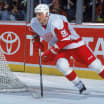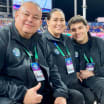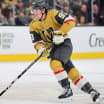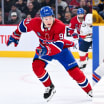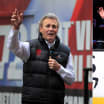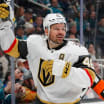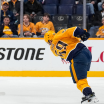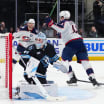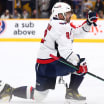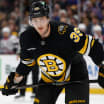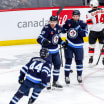The NHL officially changed forever on June 5, 1967, though not without a few anxious moments along the way.
The six new teams -- the Pittsburgh Penguins, St. Louis Blues, Los Angeles Kings, Minnesota North Stars, California Seals and Philadelphia Flyers -- became full-fledged members by handing over checks for $2 million apiece to one of the Original Six teams by the 2 p.m. deadline.
'Second Six' expansion changed complexion of NHL 50 years ago
Penguins, Blues, Kings, North Stars, Seals, Flyers joined League on June 5, 1967
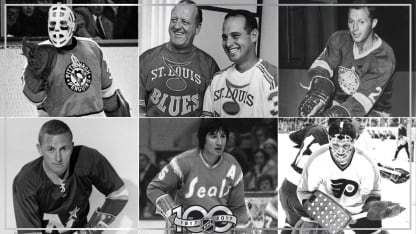
© Getty Images
RELATED: [NHL Centennial coverage\]
However, the money from the Flyers nearly didn't get there on time.
A power failure disrupted communications between the Fidelity Bank of Philadelphia, which was going to send the $2 million from the Flyers, to the Royal National Bank of Canada in Montreal.
"I was sweating a bit," Flyers president Bill Putnam said, according to the Montreal Gazette.
The money arrived after phone lines from New York were used to work around the power problems, Putnam and Lou Scheinfeld, the fledgling Flyers vice president of business operations, got the check to NHL president Clarence Campbell just before the deadline and the Flyers (whose check went to the Toronto Maple Leafs) were officially in.
"I hope that by this time next year, we have reason to congratulate ourselves," Campbell said after the NHL officially doubled in size. He said all arena requirements had been met, proof of solid financing had been provided and that territorial rights of some minor leagues and teams would be met.
The new teams were placed together in the West Division, with the established teams forming the East Division. The length of the season, which had been 70 games since 1949-50, was raised to 74 for 1967-68, with each team playing the others in its own division 10 times and those in the other division four times.
All of a sudden, the NHL really was a "national" league.
"It had a major impact on the League because thereafter there was almost a lineup for other cities to want to join the League," Brian O'Neill, then the NHL's director of administration who oversaw the 1967 expansion draft and scheduling, told The Associated Press in 2016. "That was a key to the expansion, to spread the game from California to New York. ... It convinced a lot of people that hockey was a major sport now and it was coast-to-coast and that selling franchises would not be difficult."
With the money issues out of the way, the old and new owners spent much of the rest of the day working on rules and ironing out the details of the expansion draft that would be held the following day. The Original Six teams were allowed to protect 11 skaters and a goaltender; each of the new teams would be allowed to draft two goalies and 18 skaters. The order of selection was determined when the names of the six new teams were placed in the Stanley Cup and drawn by Campbell.
The Kings, who got the first pick, selected goaltender Terry Sawchuk, whose heroics a few weeks earlier helped the Maple Leafs win the Stanley Cup for the fourth time in six seasons. St. Louis took another future Hall of Fame player when it selected Glenn Hall from the Chicago Blackhawks. Those players were stars near the end of their NHL careers; the Flyers found a third future Hall of Fame goaltender when they took Bernie Parent from the Boston Bruins.
The "Second Six" have had their ups and downs since joining the League 50 years ago.
Hall helped the Blues become the first of the new teams to reach the Stanley Cup Final; he was awarded the Conn Smythe Trophy as playoff MVP even though St. Louis was swept in the 1968 Final by the Montreal Canadiens. The Blues made the Final in each of their first three seasons but didn't win a game; they haven't been there since 1970.
With Parent in goal and winning the Conn Smythe, the Flyers became the first of the newcomers to capture the Cup when they defeated the Bruins in the 1974 Final. They repeated as champions in 1975, with Parent again chosen as playoff MVP, but haven't won since.
The Penguins struggled through much of the 1970s and 1980s, but won the Cup in 1991 and 1992, then again in 2009 and 2016. They are two wins away from becoming the first of the 1967 expansion teams to win it five times.
The Kings didn't make the Final until 1993, when they lost to Montreal. They finally won the Cup for the first time in 2012 and again two years later.
The Seals floundered for most of their time in Oakland before moving to Cleveland in 1976. They lasted two seasons as the Cleveland Barons before merging with the North Stars, who went to the Final for the first time in 1981 but lost to the New York Islanders. The North Stars lost the 1991 Final to the Penguins and didn't win a championship until 1999, when the relocated Dallas Stars defeated the Buffalo Sabres in the Final.
Those two days at the Queen Elizabeth Hotel were the final step in a two-year process that saw the NHL double in size, going from a regional six-team entity that had been locked into the same cities for 25 years to a coast-to-coast league that was poised for growth it couldn't have imagined. By 1979, the League had grown to 21 teams; by 2000, that number had risen to 30. The Vegas Golden Knights will begin play in the 2017-18 season as the NHL's 31st team, the latest offshoot of a process that began five decades ago.

